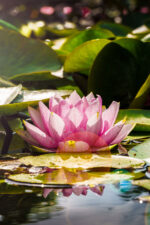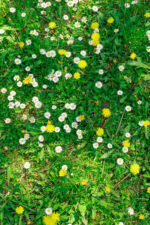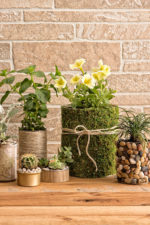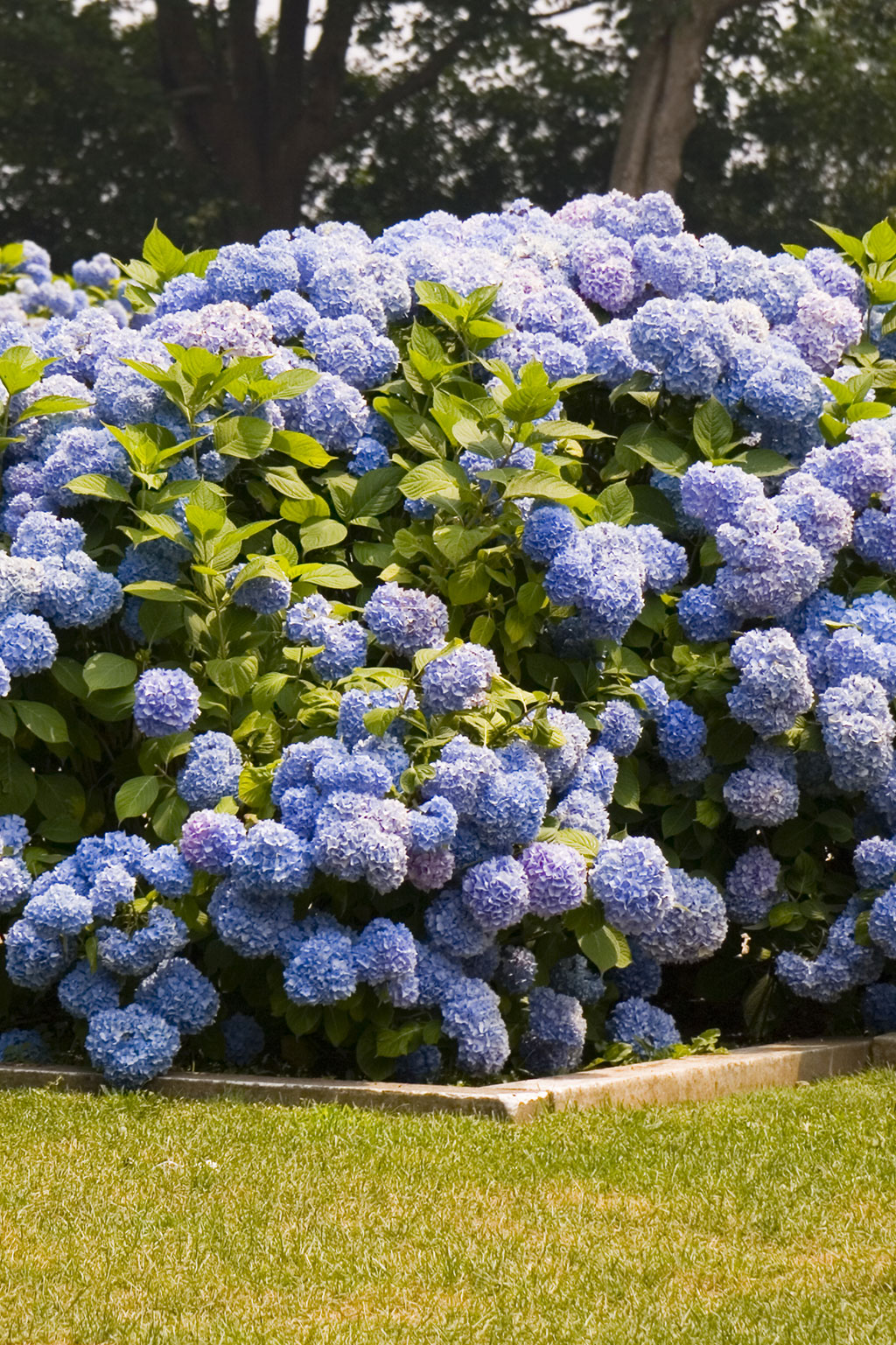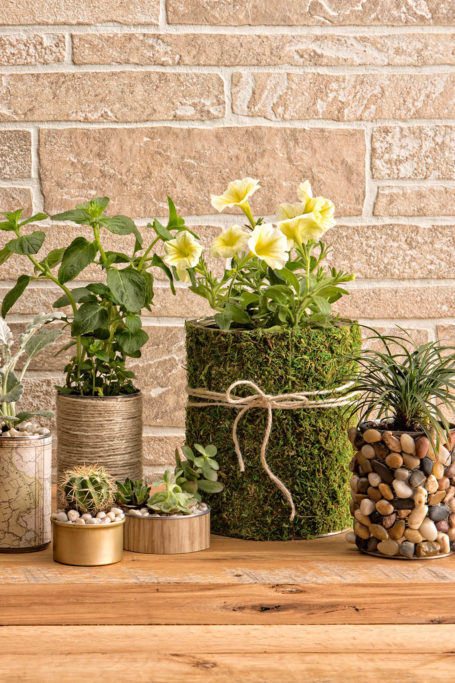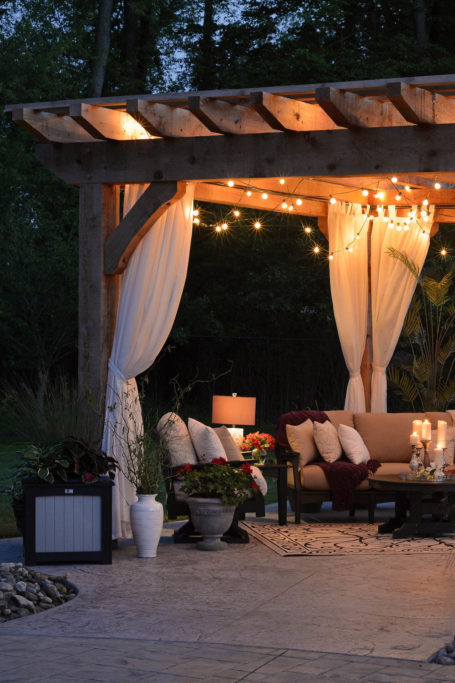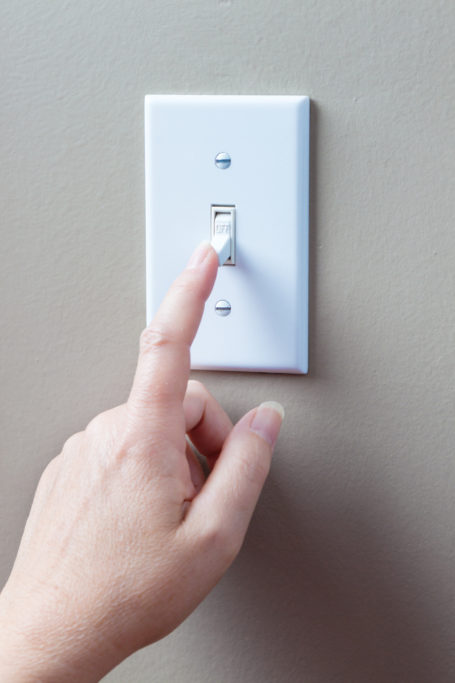Uplift Your Home with Hydrangeas
Graceful, dramatic, and bursting with color—what’s not to love about hydrangeas?
These flowers grow in a stunning variety of hues and bloom in a lavishly contoured crown shape that adds the perfect touch to any area. Potted or planted, they can make outdoor living spaces feel more luxurious and even draw one’s eye toward your property’s facade. And when nurtured indoors, their voluminous blooms elevate their surroundings to pristine elegance. However you prefer them, this care guide can help you cultivate them into ideal companions to your home both inside and out.
A familiar flower
The name hydrangea actually refers to a family of flowering perennial shrubs, each of which produces thick, green leaves and tall stems of distinct, instantly recognizable blooms. They generally flourish throughout USDA Plant Hardiness Zones 3 through 9—that is, most of the continental United States except for its northernmost and southernmost edges. But if you reside in a region with harsh summers or winters, you can still grow hydrangeas; yours may just prefer to live indoors with you to escape the severe temperatures.
Tended well, you can expect the plant to grow up to approximately fifteen feet high and produce flowers throughout spring and summer (or even early fall) while retaining the appearance of a lush and full bush in other seasons. It’s best features, though, are its stunning colors. These can vary greatly from shrub to shrub, producing gentle white blooms or vibrant ones of deep purple, powdery blue, or blushing red. If you’re lucky, your hydrangea may even feature an intriguing mix for a multihued patchwork that will bring a sense of whimsy to every spring.
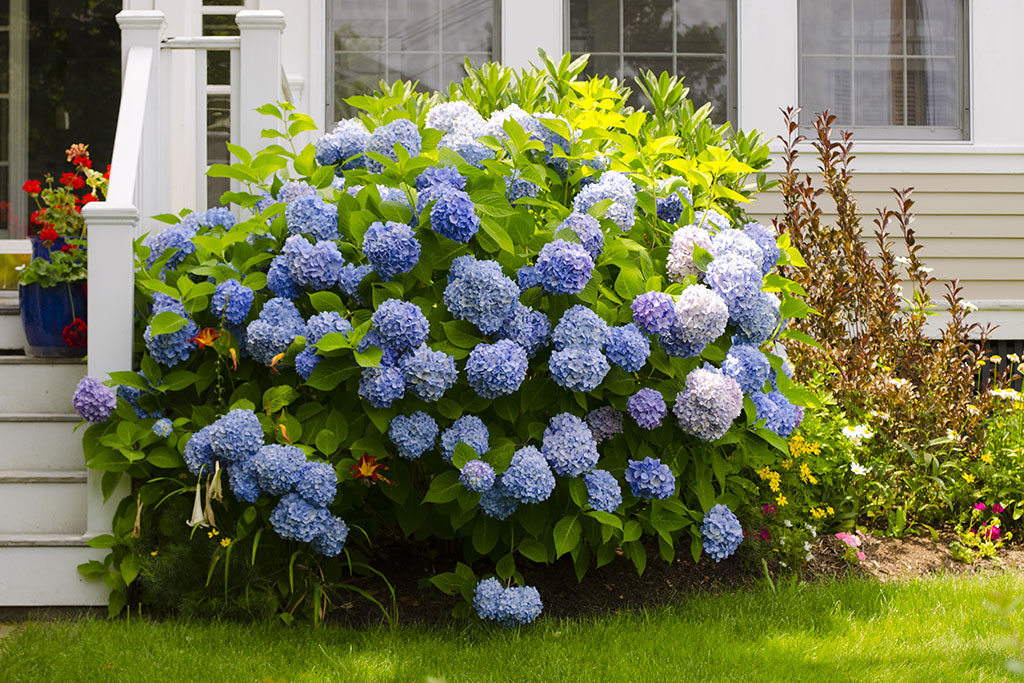
Prudent planting
Like many beautiful plants, the hydrangea requires proper care in order to reap remarkable results. First, visit a local nursery, farmers market, or gardener to ensure that you select a healthy-looking and well-blooming shrub with stiff leaves. Then determine the best spot to place it. Whether potting or planting outdoors, choose an area on the east side of your home so it can soak up the full morning sun and enjoy afternoon shade. If it’s going in the ground, also make sure that it is three to ten feet away from other large plants to accommodate its growth potential. And for an indoor hydrangea, put it in a well-draining pot near a window that receives direct morning sunlight.
Soil is the foundation of any healthy plant, so opt for a moist, fertile variety that encourages drainage, and add compost or fertilizer if needed—nourishing the soil is especially crucial if you reside in a drier region of the country. Be mindful of your timing as well: the Old Farmer’s Almanac recommends planting a hydrangea in the early morning or late afternoon to avoid immediately exposing it to intense heat or sunlight. Once you plant it, cover the dirt with organic mulch to lock in moisture and prevent weeds from growing and stealing its nutrients.
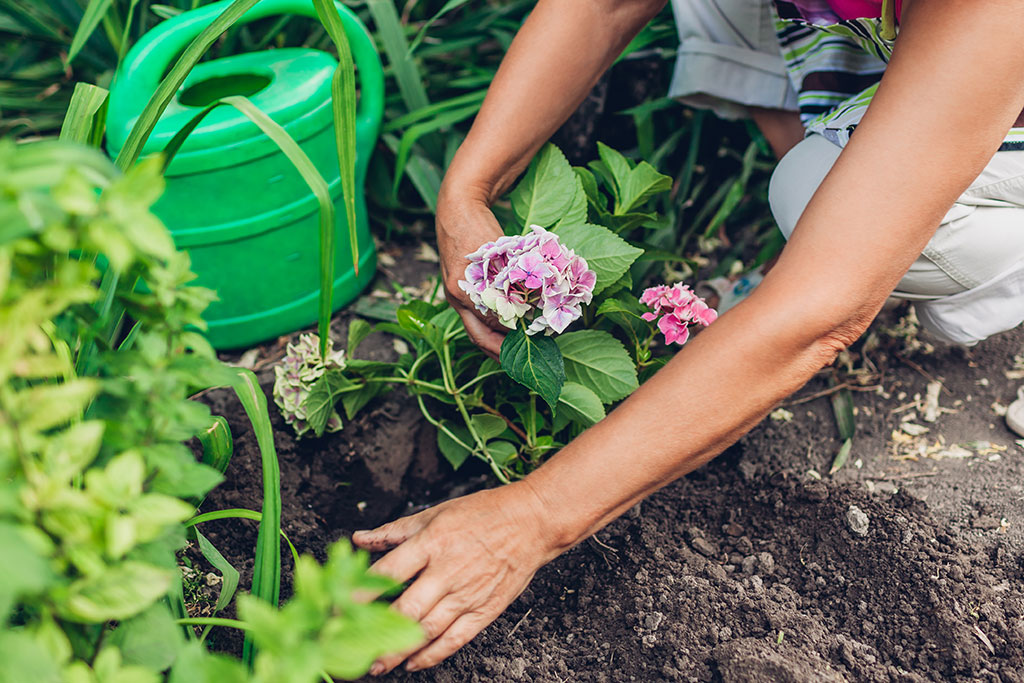
Care and cures
Though hydrangeas are not generally fickle, you should adhere to these care guidelines to protect your shrub’s beauty:
- Water liberally. Consistent moisture is essential, particularly for a young plant. Give yours a deep watering (without waterlogging the roots) three times a week during growing season, typically late spring through early fall. You can reduce this to a couple of times a month in winter depending on how much precipitation your region gets.
- Prune annually. You may need to cut some stems or flowers in summer after blooming to prevent tangled growths. Luckily, this gives you an opportunity to decorate your home with fresh flowers!
- Keep warm. If your region experiences freezing winters, give an outdoor hydrangea a frost covering for protection.
Those who live anywhere in zones 3 through 9 can generally stick to these basic steps to witness vibrant results. However, if you reside further north or south, you should be more attentive to signs like drooping leaves and underwhelming blooms to foster a healthy and colorful plant.
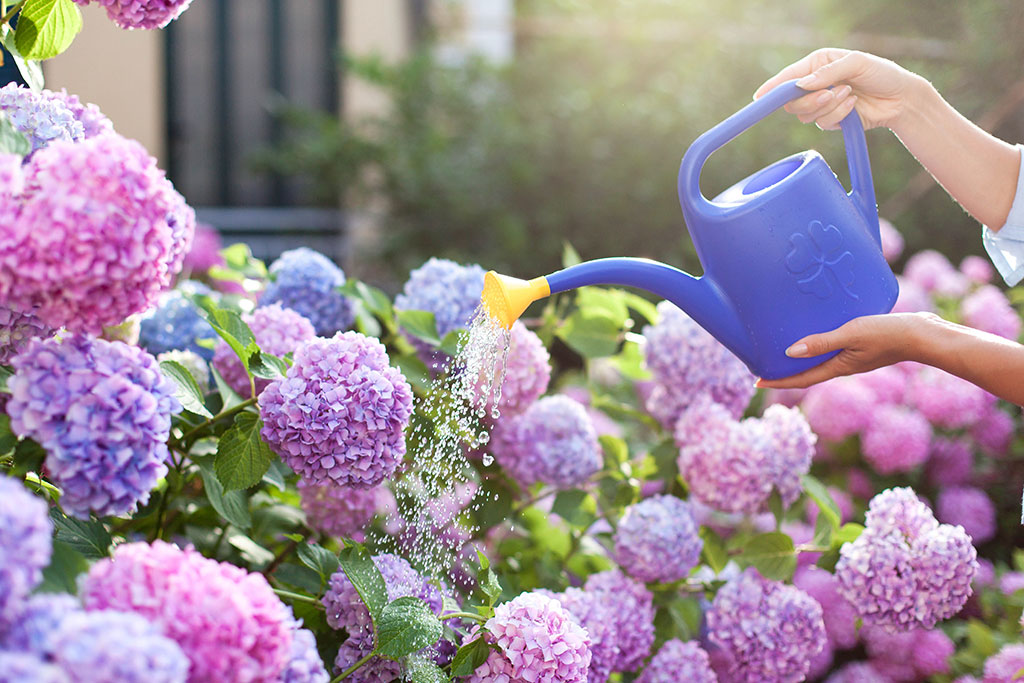
Elevated interiors
Hydrangeas are sure to add a vibrant pop to your garden, maximizing your curb appeal if you place a shrub on either side of your entryway. And a potted one on an indoor windowsill may lend the space an additional touch of elegance and charm, emitting a gentle, sweet scent for a soothing ambience. But these benefits don’t have to be relegated to only the sunnier spots of your home. Source clippings either from a store or your own yard, and you can enjoy them as stunning decor in whatever rooms you like.
For instance, you could set them in a large vase to feature them prominently on your dining or coffee table or arrange them in smaller vessels to accessorize bookshelves, countertops, or end tables. While they serve as excellent focal points on their own, you could also pair them with complementary greenery—including subtle blue-green eucalyptus or leaves from their own stems—and other flowers in a compatible color palette. Or for a fulfilling home project, consider drying the petals to make long-lasting arrangements that add a charming element to rustic or vintage-inspired areas of your home.
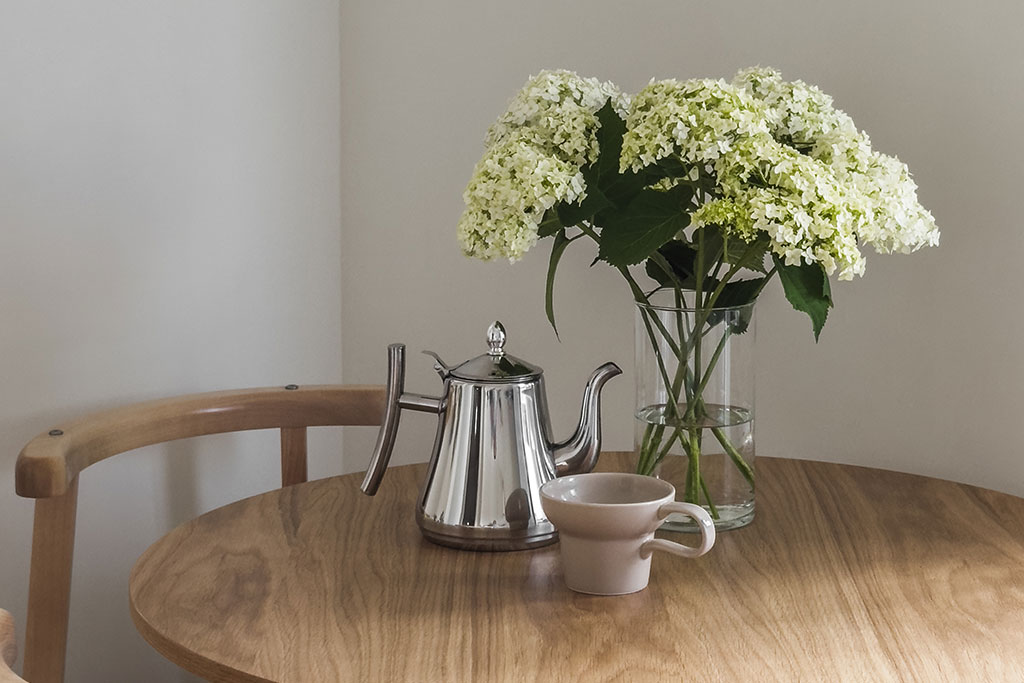
Almost infinite ways exist to enjoy a hydrangea’s beauty, but wherever and however you decide to feature this magnificent flora, it’s sure to make a rousing impression.

